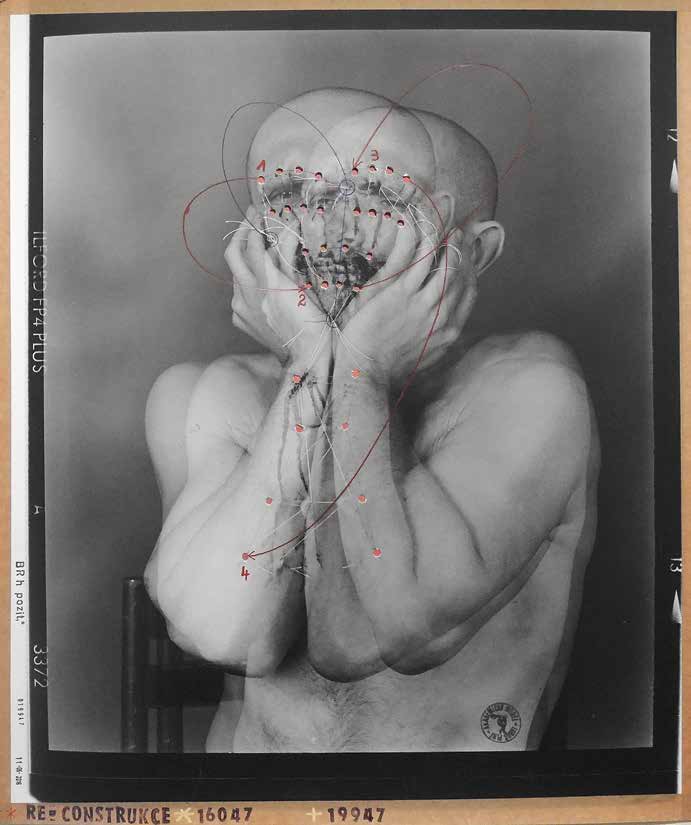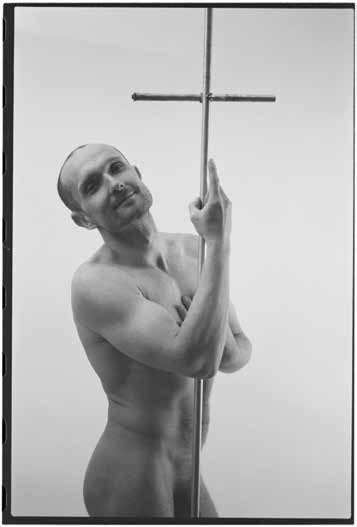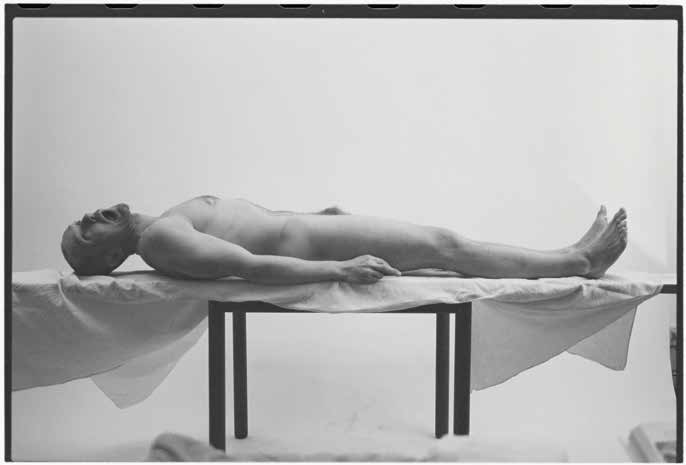Luboš Plný
Photography as a Tool of Art Experiment
The name Luboš Plný (born in 1961) was almost unknown in the Czech art world until the summer of 2017. Still, it has long been spoken of as a revelation in the contemporary art sphere – but only in the narrow circle of the initiated. The introverted artist, who until recently was included on the list of Outsider Artists, shocks and fascinates with his novel concept of art, with the transparent brutal honesty he is able to use in his art to share very fundamental and completely trivial areas of life as well as his philosophy of life. His works portray birth, death, sex, sleep, pain, sickness, aging, and much more.
The artist became famous for his detailed anatomical drawings presented in diary format. Gallerists in Paris and New York have been interested in him for fifteen years. His works are represented in significant international art collections, yet, in the Czech Republic, Luboš Plný has exhibited only sporadically within the context of group shows. He has had only two solo exhibitions – at the Millennium Gallery in 2002 and at the Artinbox Gallery in April 2017. Everything changed in the summer of 2017, when Luboš experienced phenomenal success at the 57th Biennial of Contemporary Art in Venice. He was the only Czech chosen for the main exhibition section by the French curator Christine Macel. ARTSY wrote about him as one of the fourteen remarkable artists out of the 120 who exhibited in the main section. The French daily Le Monde described him as one of the three most captivating artists. Interest in him now finally manifests even in his native land. At the end of 2017, the DOX Centre for Contemporary Art organised what has, to date, been the largest and most comprehensive show of his work – VIVA Luboš Plný! This exhibition included the main areas of the artist’s diverse work: anatomical drawings, time-lapse conceptual projects, collages, assemblages, sculptures, objects and photographs. Here, we focus on Luboš photographic works. He does not know how to photograph but has used the medium in his work for decades – mostly in his dual role of artist and model. He hires a photo studio and a professional photographer. His work has a strong autobiographical and time-lapse aspect.
The first major work where Luboš took full advantage of photography was his multi-year Academic Model conceptual project. The artist still considers it his most accomplished work. After three unsuccessful applications for admission to the Academy of Fine Arts in Prague, he came up with an original idea and chose a peculiar method of attending lectures – he became a paid model. He devoted the amount of time generally spent on regular Master’s studies to this activity – six years. During this time, he studied art history, and discussed relevant topics with students and educators. When looking for a method to “preserve” the activities he had completed at AVU and complete a “thesis”, he logically settled on photography. He chose ten famous works from the history of world art and portrayed each one acting as the model – he had himself photographed in these poses at a professional photography studio.
Stitching: In 2003, Luboš Plný decided to subject himself to another personal test – he wanted to test the limits of his own pain by undergoing stitching on various parts of his body. He did not intend to immediately present the project publicly, thinking that he might further process the material over time. He was photographed before the event, and then, without anaesthesia, he used a shoemaker’s needle and thread to stich his face. The assistant then helped him to stitch his arms together in such a way that he could to feel the intensity of the slightest head movement throughout his whole body. Thirteen years passed. Meanwhile, both of
his parents died, his son was born, he got married and divorced, he met the French gallerist Bruno Decharme, he launched an international artistic career… In 2016, he returned to the silver-bromide black and white photographs from 2003 and was photographed again in the same positions – this time in colour and with a digital camera. He did not plan on stitching himself again, but he did stitch together his self-portraits from 2003 and 2016 in different ways. The resulting collages and assemblages reflect the artist’s transformation over the thirteen years, as well as the shift in the used medium from analogue black and white to digital colour photography.
Sex and eroticism: Luboš Plný transforms not only his mental and physical sufferings into his artistic projects but also physically experienced pleasure. Sex and erotica naturally fall into the realm of his interest. In his collaged drawings, amongst other things, he repeatedly uses cut-out photos of female and male sex symbols from magazines. He depicts sexual fusion in drawings, including the fusion of those inaccessible, internal parts of the body. In this way, he also portrayed the birth of his son, Vincent, supplemented with the time records of how the birth progressed.
Thyroid surgery: In 2006, Luboš underwent thyroid surgery. He asked the surgeon for detailed photographic documentation of the operation. In 2017, he incorporated the photographs in a monumental triptych – a collage of drawings, where he described the event in detail and both artistically and anatomically dissected it based on the detailed notes he had made at the hospital before and after the surgery. “Art is auto-therapeutic for me, and that is always a priority for me. These are diary entries, records of somatic processes, hospital stays, and also records of the time that I dedicate to creating. When I know that an unpleasant experience will give rise to art, it is as if I were reducing the risk I face in the given situation. The artistic record overrides the seriousness of the situation.” In a similar way, the author coped with the death of his parents. He dedicated a drawing to his mother and father, into which he embedded a laboratory dish containing their ashes and surrounding it inscribed the days of their lives.
Time: Luboš has always been fascinated by the passage of time. He does not count his age in years, but in days. He marks all of his works with a number indicating how many days old he was when he started work, and then how many days he had existed in the world on the day he finished the work. This is probably one of the reasons why he is so fond of using the photographic medium, which helps him stop time in a unique way.
Luboš Plný is a hard-to-classify maverick, and although he studied art history, any similarities with the work of other artists are rather coincidental. Despite the strong conceptual character of Plný’s works, the artist is so personal and intimate that he himself becomes a real original within the context of contemporary Czech and international art developments.
#31 Body
Archive
- #45 hypertension
- #44 empathy
- #43 collecting
- #42 food
- #41 postdigital photography
- #40 earthlings
- #39 delight, pain
- #38 death, when you think about it
- #37 uneven ground
- #36 new utopias
- #35 living with humans
- #34 archaeology of euphoria
- #33 investigation
- #32 Non-work
- #31 Body
- #30 Eye In The Sky
- #29 Contemplation
- #28 Cultura / Natura
- #27 Cars
- #26 Documentary Strategies
- #25 Popular Music
- #24 Seeing Is Believing
- #23 Artificial Worlds
- #22 Image and Text
- #21 On Photography
- #20 Public Art
- #19 Film
- #18 80'
- #17 Amateur Photography
- #16 Photography and Painting
- #15 Prague
- #14 Commerce
- #13 Family
- #12 Reconstruction
- #11 Performance
- #10 Eroticon
- #9 Architecture
- #8 Landscape
- #7 New Staged Photography
- #6 The Recycle Image
- #5 Borders Of Documentary
- #4 Intimacy
- #3 Transforming Of Symbol
- #2 Collective Authorship
- #1 Face











